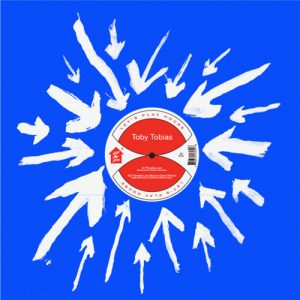 British EDM artist, Toby Tobias, is no stranger to the EDM world. Since the early 2000’s, he has produced music on labels such as Odori, Hi-phen, and Rekids. He also has done remixes for labels such as Beat Freeze Records and Dialect Recordings. Finally, the artist DJ’s his own radio program called Late Night Audio which frequently pulls in major musical guest artists and has a wide following. Just this past May, Tobias released the “Paradise Lost” EP on Lets Play House, and, although the music demonstrates his ability to create successful grooves, the album lacks the ability to establish engaging ambience.
British EDM artist, Toby Tobias, is no stranger to the EDM world. Since the early 2000’s, he has produced music on labels such as Odori, Hi-phen, and Rekids. He also has done remixes for labels such as Beat Freeze Records and Dialect Recordings. Finally, the artist DJ’s his own radio program called Late Night Audio which frequently pulls in major musical guest artists and has a wide following. Just this past May, Tobias released the “Paradise Lost” EP on Lets Play House, and, although the music demonstrates his ability to create successful grooves, the album lacks the ability to establish engaging ambience.
The opening track, “Paradise Lost,” enters with a slow, muddy bass drum beat, accompanied by white noise hissing mechanically in the background. At 45 seconds, falsetto moaning is heard floating about the stereo field, launching the music into an eerie, spacey ambience. The music continues in this slow, hypnotic fashion for quite a while, but then, at 3:30, a filtered synth bass steps in and takes the lead, shifting the music into funk territory. Finally, around 5:30, the atmosphere begins to dissipate into a cloud of static, leaving the bass groove to finish out the track.
While this track holds its own in terms of danceability, I found the music itself to be boring and uninspired. For one, the track is about four minutes too long, and the beats are too slow and redundant to maintain my interest. Also, and perhaps more importantly, the ambience surrounding the groove is too sparsely populated, making the mood unclear and, eventually, boring.
The second track, “Paradise Lost (Marcos Cabral Remix),” attempts to alter the original track through upping the tempo and focusing more on percussive layering rather than ambience. For example, the intro to the track uses synth shaker, a clap track, and a clavé, to make the music more texturally complex and engaging. Another positive improvement comes from the atmosphere construction and its relation to the overall energy arc of the track. That is, instead of randomly throwing in vocal samples for the purposes of establishing a certain mood, Cabral utilizes the eerie male falsetto more sparingly and as a tool to move the music in a more intense and immersive direction. That being said, many problems existing in the first track still apply. For one, the song length is way too long, and even though the atmosphere is more consciously constructed, it’s still too sparse to hold my attention.
The third track, “Choc-Ice for 4,” in some ways addresses the problems I had with the previous two tracks. The use of acoustic Afro percussion mixed in with sporadic cell phone beeps and heavy funk bass make the initial atmosphere of the track much more interesting. Furthermore, the music is seemingly less reserved about moving into different musical territory. For example, the drum break at 1:30 reexamines the boundaries of the track through its use of thumb piano and wood block and through the near-removal of all electronic elements. On the whole, I felt this track was the strongest on the album, and I felt that the track revealed that in order to successfully create ambient EDM, the music must always be transforming either texturally or structurally in order to remain interesting for a long period of time.
The final track, “Choc-Ice for 4 (Tokyo Black Star lost in Akiba Dub),” is not as strong as its predecessor, but still holds its positive qualities in its risk-taking abilities. The music itself is far darker and more ominous and utilizes a low, barely audible drone to ground the piece. The melodic line comes from a heavily distorted synth line that kicks in around halfway through the track, eventually leading the music into a chaotic noise collapse that sounds like a Super Nintendo stuck in the microwave. While I found these elements to be successful, the track as a whole falls prey to the problems inherent in the first track in that the use of atmospheric voice samples does nothing for the music other than to add interesting noises.
On the whole, I’d day “Paradise Lost” is not an entirely successful EP, but it does hold some information for EDM artists on how to successfully produce engaging ambient music. As I mentioned before, this type of music really needs to be in a state of flux at all moments, carefully adding and removing various structural and textural elements in order to remain engaging. Furthermore, the constructed ambience needs to be (or at least feel) full, which may manifest as complex structures, blaring volumes, or nuanced sonic layering. Finally, all elements introduced into a track must have purpose. That is, each new sound must help in moving the track forward, rather than being used for filling in space. So, while I didn’t care much for the music in “Paradise Lost,” I felt it held value in the ambient territories it attempted to explore, regardless of how engaging the resulting music turned out.




